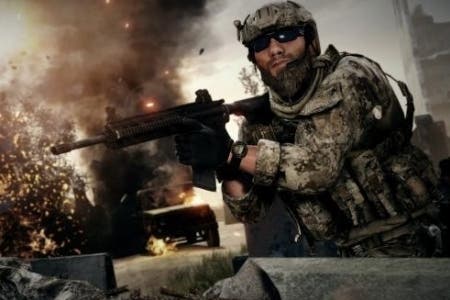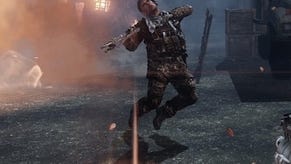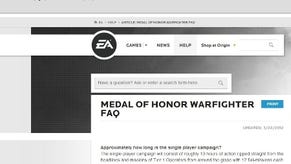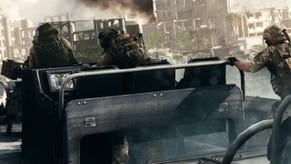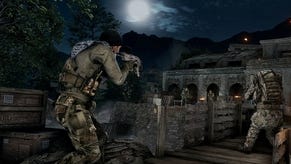Face-Off: Medal of Honor: Warfighter
Inner conflict.
| - | Xbox 360 | PlayStation 3 |
|---|---|---|
| Disc Size | 4.9GB (disc 1), 7.3GB (disc 2) | 12.7GB |
| Install | 4.9GB (disc 1), 7.3GB (disc 2), 1.7GB (HD content) | 1981MB (including patch) |
| Surround Support | Dolby Digital | Dolby Digital, DTS, 5.1LPCM |
It's all change for Danger Close. For Medal of Honor: Warfighter, the firm's previous work with Unreal Engine 3 has been jettisoned in favour of a wholesale switch to EA's in-house Frostbite 2 - the same technology that powers the spectacular visuals of Battlefield 3. In some ways, this makes Warfighter a more coherent offering than its predecessor, which saw its multiplayer component crafted in Sweden by BF3 creators DICE. Now the campaign and multiplayer offerings are cut from the same cloth, using the Frostbite 2 engine to fuse these two elements together into a more unified package, sharing the same core gameplay mechanics.
The change in the underlying technology utilised for Medal of Honor: Warfighter has dramatic consequences for the look and feel of the game too. Dynamic lighting breathes life into the war-torn landscapes, while the inclusion of destructible environments adds an extra level of spectacle to the proceedings - flash floods cause buildings to be torn from their foundations, and walls collapse and shatter during heavy bombardment. Of course, many of these sequences are scripted, but the result is a title that feels a lot more organic and lifelike than the first Medal of Honor, and for obvious reasons has much in common with Battlefield 3.
However, the excellent visual work carried out by Danger Close for this sequel is marred by questionable design choices and significantly buggy gameplay, in which many parts of the experience simply feel unfinished or partially broken. A launch-day patch was issued by EA in an attempt to fix some of the most common issues encountered by the development team, but despite this 'quick fix' option being deployed in an attempt to bring the game up to release standard, there are still a number of issues which frequently come to light; clearly Warfighter still needs more work to really feel like a finished product.
In that respect, it's a shame that gameplay and polish didn't receive as the same lavish attention as the visuals, because Medal of Honor: Warfighter can look quite superb on all three formats. Here's how each version - PC, PS3 and Xbox 360 - stacks to one another, backed up as ever by an expansive comparison gallery.
"It's a shame that the effort put into the visuals isn't matched in terms of gameplay and polish. Whatever its issues, Warfighter is a good-looking game."
Alternative versions of this video are available:
The similarities with Battlefield 3 are obvious: in common with the DICE epic, Danger Close has elected to render Warfighter in 1280x704 on both current-gen consoles, the image framed with black bars at the top and bottom of the screen. The idea here is simple: the developers render slightly fewer pixels on-screen as a performance and memory-saving measure, while the adoption of the miniscule black bars negates the need for any scaling. The end result is that image quality is on a par with a native 720p game, but at the expense of losing a tiny amount of screen real-estate for those who like to game with the overscan function turned off on their HDTV.
In terms of anti-aliasing, post-process edge-smoothing is used on the consoles. FXAA is employed on the 360, while an MLAA implementation is swapped in on PlayStation 3 instead. On first impressions, overall image quality is very similar across both platforms. While regular edges are smoothed over quite nicely, sub-pixel shimmering is still an issue and we also see some visible pixel-popping artefacts which can accentuate the jaggies in more detailed areas of the game. That said, PS3's MLAA tech does a slightly better job in troublesome areas, with this version gaining a slightly smoother look.
On the other hand, the PC version runs natively at whatever resolution you desire, with a number of edge-smoothing options at the user's disposal, including a choice of hardware-based multi-sampling anti-aliasing (MSAA) or post-process FXAA - with varying degrees of quality on offer. Both AA modes can also be run simultaneously, with FXAA being used to catch any stray edges left behind by the MSAA - useful, since the multi-sampling appears to be carried out fairly early on in the rendering cycle. The results are rather impressive with far fewer jaggies in play, particularly when running the game in 1080p where the extra pixel precision really benefits post-process edge-smoothing solutions.
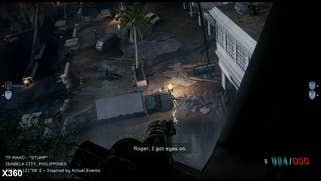

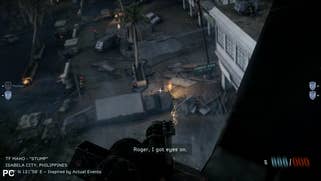

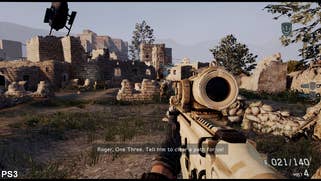

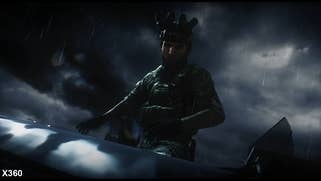
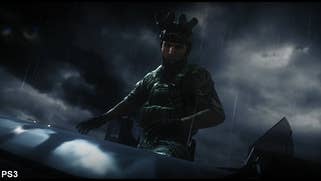


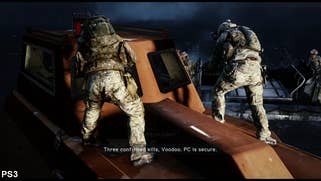
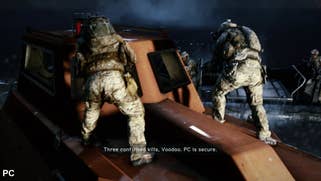
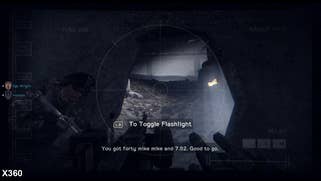
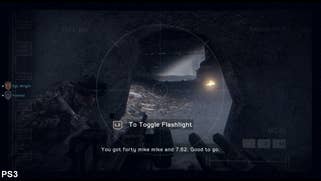

Overall, the core look of the game is very close on the consoles, but with some key differences between the two platforms: lower-resolution textures are used on the PS3 on many surfaces, while the amount of foliage in many locations is also subtly pared back compared to on the 360. LOD (level of detail) streaming is also a touch faster on the 360, with distant objects being rendered when the player is closer to them in the PS3.
Surprisingly, alpha buffers are mostly rendered in high resolution on both formats, with Danger Close instead choosing to pull back on texture resolution and environment detail in order to conserve bandwidth. Elsewhere we see the PS3 gain the console advantage where shadow quality is concerned, with these effects looking smoother and more refined on the platform through the use of better filtering, which helps to hide some of the low-resolution artifacts. Other than that, the gamma set-up on the 360 results in that version appearing darker than the PC and PS3 releases, crushing details in dark areas and diluting various effects in the process.
Xbox 360: the HD texture install
The most dramatic difference between Xbox 360 and PS3 comes down to the HD texture installation on the Microsoft platform. Warfighter extensively streams artwork from both systems' hard drives instead of attempting to load all the graphics data into each console's limited memory pools. The PS3 version of Warfighter ships on a single Blu-ray disc, while on the 360 the game arrives on a two-disc package, with the multiplayer mode and HD Pack located on the first disc, and with the single-player campaign stored on disc two.
A 1981MB installation is mandatory on the PS3, while on 360 the installation is optional. At the title screen a message advises users to install the HD Pack, and this is something that we strongly suggest you do; not doing so leads to a number of significant graphical cut-backs throughout the game: lower-resolution textures are used extensively in more detailed environments, and lower-quality LOD models replace the vastly superior standard artwork.
There is one very minor advantage of playing this visually compromised version of the game, though, in that performance is given a slight boost. We see slightly lower levels of screen-tear and more stable frame-rates in like-for like scenes. However, the difference is rather subtle, and we'd be inclined to take a small dip in overall smoothness over the horrendously downgraded visuals. In theory the HD texture pack could easily fit onto the flash storage available on a 4GB Xbox 360, but in common with Battlefield 3, the art will only install onto a hard drive.
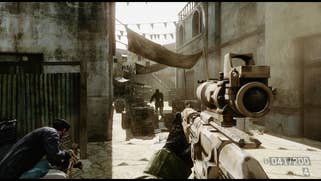

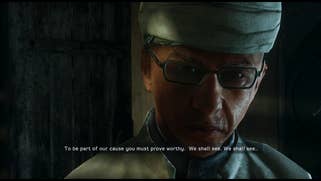
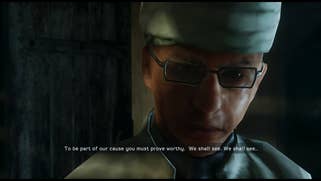
While Frostbite 2 manages to deliver visually impressive games on console, the technology is clearly geared towards high-end computers, and in that respect the PC version of Medal of Honor: Watfighter offers up more detail and visual effects without compromising on resolution or frame-rate, provided you have meaty enough hardware.
Compared to the consoles, higher-resolution textures are found on many surfaces - most prominently on the characters - along with higher-quality LOD models. Object complexity is also given a boost through the use of tessellation, which adds additional geometry detail to the various landscapes throughout the game. However, there do appear to be a number of streaming bugs in the game, which lead to higher-quality assets failing to load in at all - most noticeably, normal-mapped damage layers on the walls, and higher-quality character models during some of the cut-scenes.
The PC also features a number of enhanced visual effects over the console builds. A more prominent grain/noise filter is used on various sections throughout the game, and alpha-based effects are used more liberally. Curiously, with regards to the latter, we see that some of these effects are rendered in the same low resolution as on consoles, which is surprising given that memory and bandwidth limitations are far less of an issue on the PC. Elsewhere HBAO replaces the low-end SSAO implementation found on consoles, and we are also given an impressive object blur effect, which helps provide a more cinematic feel while upping the level of smoothness when running at lower frame-rates. Shadows are also rendered in a higher resolution, and are much better filtered too.
So, as expected the PC version of the game is by far the most visually impressive of the bunch, and as long as you don't run the game at extremely high resolutions then smooth frame-rates are also possible on more modest gaming rigs. While a playable experience at 1080p using the ultra preset is ruled out on our trusty Core i5 750 and GTX 460 combo, it is possible achieve a perceptual 60FPS when running in 720p, with frame-rates regularly hovering in the 40-60FPS range. In order to achieve similar performance in 1080p, something along the lines of a Radeon HD 7870 or GeForce GTX 660 Ti is required. But the experience is definitely worth it: the added smoothness and crisper controller response gives the game a far more polished feel.
"This is a Frostbite 2 game - so the PC version offers a significantly enhanced experience over the consoles that goes beyond resolution and frame-rate."
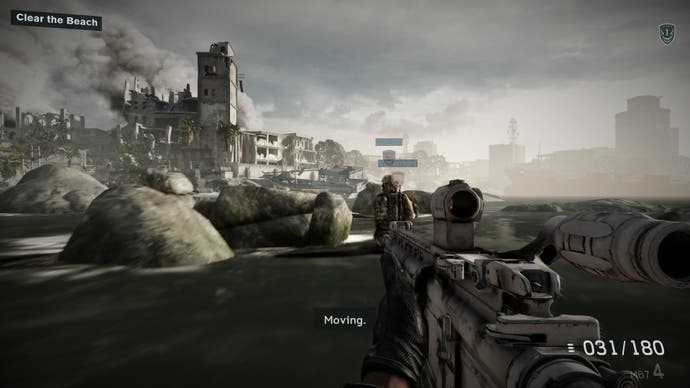

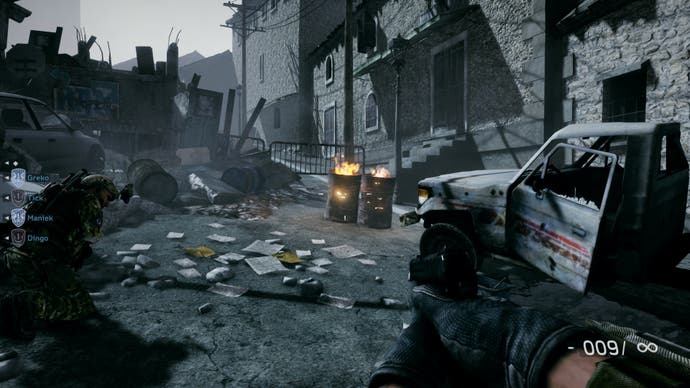

Medal of Honor: Warfighter performance analysis
It would be impossible for a game like Medal of Honor to render its exhaustive range of visual effects and lighting while running at 60FPS on consoles, so instead Danger Close targets a 30FPS frame-rate, which allows the engine a far more manageable 33.33ms of rendering time to generate each frame. On top of that, this allows for the developers to realise the impressive array of lighting and effects which engulf every facet of the aesthetic.
In common with most current-generation games, variable v-sync is deployed on the 360, where the game is allowed to tear when the renderer goes over budget. On the PS3 a very different approach is used: v-sync is permanently enabled in all scenes expect for the game's two driving missions, which is the only time in which the engine is allowed to tear on the platform.
While the two approaches are very different, the end goal is still the same: to maintain a smooth 30FPS update with as little disruption to gameplay as possible. And for the most part both versions do a good job at achieving that feat in most situations, but it's clear that the PS3 game has a noticeable advantage in the single-player campaign. A look at the opening section of the game shows that both versions can hold a steady 30FPS in scenes with a number of alpha and shader effects in play, albeit with the player being funnelled down a linear path. The only difference between the two versions is the appearance of some very mild tearing on the 360.
"In terms of console performance, we were expecting a re-run of Battlefield 3, but the PS3 version proved to be pleasantly surprising."
Where we see the 360 begin to noticeably slip away is in scenes that feature more heavy use of multiple light sources. Here the PS3 game regularly commands a four-to-six frame lead, while the 360 game suffers with a hefty reduction in controller response and a much jerkier visual update. Additionally, image consistency is a real issue on the 360, with torn frames regularly manifesting up and down the centre of the screen. Driving scenes behave a little differently, with both versions tearing when under load. However, torn frames are mainly confined to the top of the screen on the PS3, thus going practically unnoticed while playing, whereas they frequently move visibly down to the centre of the screen on the 360 and into the view of the player.
Surprisingly, we also see that the PS3 game performs better in alpha-heavy scenes too, showing that the few graphical nip/tucks (in combination with the Frostbite 2 engine being expertly optimised for the platform) have directly resulted in a tangible performance advantage. Like-for-like scenes in other areas are more revealing: while the PS3 game manages to maintain a smooth 30FPS update with relative ease without any noticeable dips in performance (besides the occasional two frame drop) the engine appears to be struggling to do the same on the 360 without introducing some hefty tearing into the mix. As a result of this, even when both versions are running solidly at 30FPS, the 360 game never looks quite as smooth due to the frequent tearing causing visible judder to manifest on-screen.
So, in terms of the single-player experience the PS3 version is clearly the better of the two, with fewer frame-rate drops and no tearing outside of the game's mediocre driving sections. But what about online, where any impact on performance is arguably more detrimental to the overall experience?
"The high levels of screen-tear in the Xbox 360 version can be particularly off-putting whether you're playing campaign or the multiplayer game."
First up we have the 360, and little seems to have changed from the campaign on first impressions: tearing is introduced when frame-rendering goes over budget, resulting in some judder as torn frames move up and down the top half of the screen. But outside of this the game actually sticks closely to the 30FPS target. The only issue is that the distracting judder caused by the tearing can disrupt the connection between the player and the game, making precision shots much harder to make. On top of that, more intense scenes dealing with explosions and alpha cause heavier dips in frame-rate, although this is offset by a jump in smoothness at the expense of some visible tearing.
Things start to deviate from the campaign template when we look at the PS3 version's online mode. Once again the game is solidly v-synced so we don't see any tearing, although frame-rates are more variable. In particular we see the game hitting between 24-28FPS when running through more detailed environments, and particularly those which feature lots of alpha-based effects.
When this happens the otherwise stable feedback between the player and the game is definitely compromised; controller response is diluted and as such it harder to aim and take shots with any consultancy. That said, there are plenty of times where performance is reasonably solid, where we find overall playability to be a match for the 360 game - most notably during smaller gun fights in relatively enclosed areas.
"In common with the campaign mode, the online element of Warfighter on PS3 is running with v-sync engaged - a clear presentational boost over the Xbox 360 version."
Bugs and glitches
Away from graphical concerns, the overall level of polish is a real concern. Even after installing the launch-day patch designed to fix the most common issues, we still came across a multitude of bugs. In particular we found ourselves being respawned outside the actual environments, or bizarrely teleported away from walls during a match. Both console versions have their issues here, but PS3 is definitely the less stable version during online gameplay.
However, on the 360 we did experience several instances of audio stutter during the single-player campaign, along with one major glitch which saw us unable to continue to the next mission unless we restarted from the last checkpoint. Many of these issues are also present in the patched PC version too, along with additional problems, such as freezing when switching between FMV cinematics and gameplay, to the game failing to switch to full-screen mode on changing resolution until it has been restarted.
The conclusion is fairly clear - Warfighter shipped in an unfinished state, the day-one patch only partly resolves the issues and this "final" retail release is still not up to scratch. And that's a bit of a shame, because the core online gameplay is actually rather good: map sizes are spacious without feeling too expansive, while human competition avoids the glaring AI issues which plague the single-player campaign. It's a highly entertaining experience which manages to carve out its own niche amongst more popular titles.
"Despite the arrival of a day one patch, Warfighter remains an obviously unfinished game with a host of bugs and glitches that impact the quality of the overall experience."
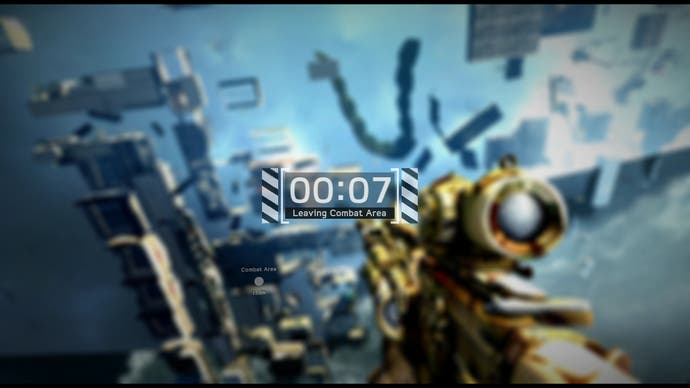

Medal of Honor: Warfighter - the Digital Foundry verdict
Danger Close has found some success in transplanting the core Medal of Honor: Warfighter experience across multiple platforms without too many compromises, but the game itself falls short of the lofty standards set by the Battlefield and Call of Duty games. There's plenty of potential locked away in the concept and ideas Danger Close has for the series, but this latest instalment feels far too much like a mishmash of gameplay concepts marred by distinct lack of polish to be considered a worthwhile purchase at full price.
On a graphical level, the situation is far more impressive. Performance-wise the PS3 game leads the way where the campaign is concerned, running largely without screen tearing and with fewer frame-rate drops. When online the 360 is the more stable of the two, dealing with larger environments and alpha effects more easily. The Microsoft platform also benefits from having higher-resolution textures, increased foliage detail, and slightly less aggressive LOD steaming. Meanwhile, shadow quality is visibly higher on the PS3, and alpha buffers are rendered in the same way on both systems, with a combination of high- and low-resolution effects.
Naturally, the PC version is visually superior to the console releases - and significantly so - although the overall experience is tarnished by annoying glitches that literally stop you from playing the game at certain points - crashes and drop-outs can occur fairly frequently, and even changing resolution resulted in the sound completely cutting out. However, the ability to play with higher frame-rates and sharper, more polished visuals makes it worth putting up with some of the issues: Warfighter feels so much more enjoyable to play running at 60FPS with the superb object-blur effect adding a more cinematic feel to the proceedings. On top of that, PC owners also have the option of having higher-resolution artwork, higher-quality LOD models, HBAO, and the ability to maximise image quality using multiple anti-aliasing modes at once.
In conclusion, if you must play Medal of Honor: Warfighter, the PC version represents the best purchase for those with a decent gaming rig, while players with both consoles should perhaps consider the PS3 release if the campaign is your primary concern. In fact, even factoring in online, we'd rather accept the random respawn glitches and slight increase in frame-rate drops to avoid the highly visible tearing that can be very distracting on the 360. In any case, both versions have their own issues which need ironing out, and hopefully we'll see another patch to do just that in the near future.
